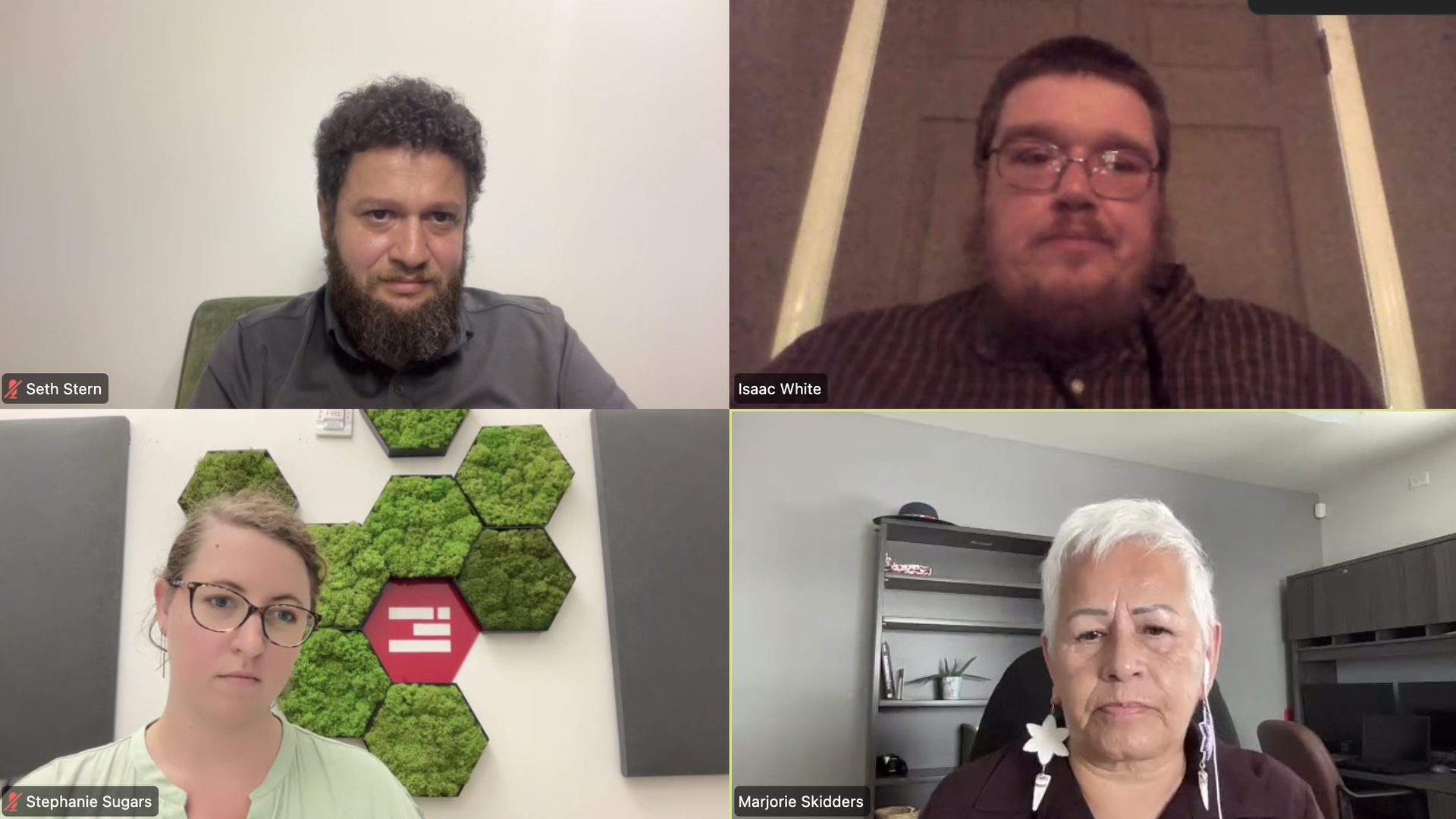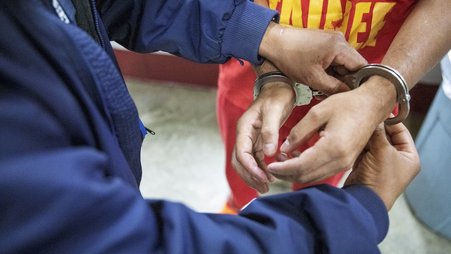Indian Time, a newspaper that served the Mohawk Nation at Akwesasne, built and informed a loyal audience of Indigenous readers on the U.S.-Canada border for over 40 years.
Then, it vanished.
In late December 2024, the paper’s last edition was printed and website updates screeched to a halt. Indian Time’s hand was forced by the same pressures affecting newspapers nationwide — declining ad revenue and struggling finances. Despite breaking inimitable stories about the Mohawk Nation, the paper could not afford to keep the ink flowing.
“We thought the economic climate of Akwesasne could hold us,” said Marjorie Skidders, the longtime and last editor of Indian Time, “but it didn’t.”
Now, a population of over 10,000 people across two different countries is living under a tribal news blackout. With no paper of record, the community must rely on the local government, social media, and non-native news sources to piece together a broken portrait of Akwesasne life.
“There is no coverage of anything to hold anyone accountable, politically,” Skidders said. “There’s no coverage of meetings, there’s no coverage of gatherings.”
To better understand the demise of one of America’s oldest Indigenous newspapers and the impact on its community, Freedom of the Press Foundation (FPF) hosted a webinar July 22 with Skidders, former Indian Time reporter and FPF contributor Isaac White, and U.S. Press Freedom Tracker Senior Reporter Stephanie Sugars.
Since the paper’s shuttering, no publication has stepped up to fill the void, White said. His frustration is compounded by the fact that he and Skidders are still the first points of contact for community members and sources they developed while at Indian Time, whom he has to remind “that the paper is closed” when they reach out to share a tip. It takes a “sensational” story, he said, to “draw outside reporters here.”
“A lot of us will say, ‘We are the invisible people,’” White said. “That’s one of the things that hurt so bad with Indian Time being gone. Who really cares about us, except for us? And I think that that’s a fair question to ask.”
He raised a couple of timely examples: Conservative commentator Ann Coulter recently posted on social media that, “We didn’t kill enough Indians,” a remark condemned by the Native American community but that drew little attention from national news outlets.
White also noted that, with all the coverage of the Trump administration’s “Alligator Alcatraz” immigration detention center, there has been little mention of the fact the facility was built on land belonging to the Miccosukee Tribe.
These are stories White and Skidders would have loved to share their perspectives on, but no longer have a platform to do so, they said.
“I think that kind of encapsulates everything,” White said. “Those two instances are things that really highlight why coverage of Indian culture is not sufficient, not even close to sufficient — and why we need our independent news outlets, like Indian Time or any other ones.”
Indian Time’s uniqueness as an independent tribal publication made the loss sting all the more. Many Indigenous news outlets “fell under the wing of the tribal government,” Skidders said. That afforded Indian Time’s staff freedoms other tribal journalists often didn’t have, like reporting without fear or favor.
“We strived to work the best that we could and be independent. And we never satisfied anyone,” she added. “We were either too one way or too the other way, but we just worked to try and do the best that we could.”
Like anywhere else in the world, press freedom violations can and do occur on Indigenous lands. White himself was arrested while covering a Mohawk land claim dispute in May 2024, and a large number of arrests and assaults of journalists took place during Dakota Access Pipeline protests in 2016 and 2017.
But documenting these incidents requires additional sensitivity, Sugars said, as few tribal constitutions enumerate press freedom protections.
“There are a large number of things that we document in terms of denial of access, demands for prior review, tribal councils having control over funding, distribution, hiring, firing, decisions, things of that nature,” she said of the Tracker. “It is challenging for us to cover those things because we don’t want to be imposing our ideas about what is wrong or right.”
White also discussed cultural differences. The notion of objectivity becomes complicated in situations where Indigenous journalists are reporting on their own neighbors, to whom they are bonded outside the domain of a journalist-source relationship.
In the moments before White was arrested covering the land claim demonstration, for example, he said he helped community elders unload food and water from a cooler and prop up a canopy to shield them from the rain. “It was just a reflex,” he said, but after he was arrested, he was afraid outside journalists would see his common courtesy as unprofessional.
“I come from a longhouse. Margie comes from a longhouse. It’s something that you just do. If wood needs to be split, you just do it. If something needs to be cooked in the cookhouse, you help,” he said. “That’s just the way that we’re taught to do things.”
When White told Skidders what happened, she empathized with his moral conflict.
“It didn’t bother me,” she said. “Wherever he goes, whatever he’s doing, he’s a Mohawk first. And he’s going to behave honorably like that.”
The Akwesasne elders, like those White helped, treasured Indian Time, Skidders said. They were, after all, the “biggest population” of the paper’s readers, and they relished staying informed about the community.
“Now it’s gone,” she added about the paper. “I don’t know how we could do it again.”
White himself is trying to keep the flame alive. He runs a podcast available on YouTube called “Sage Against the Machine” (@SageAgainstTheMachinePod), which offers a more “unfiltered look” at Mohawk news. But its “raw” and conversational nature isn’t a platform to plumb deep topics like a newspaper, and it is no replacement for the dedicated work of Indian Time.
“By the book, as a journalist, you cannot do it part time,” he said. “It’s just not feasible. It’s a loss.”





